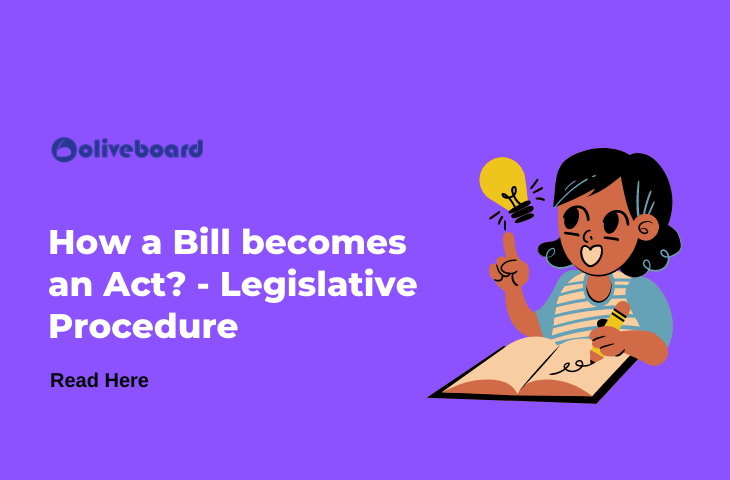Governmental acts are used by the Indian Parliament to legislate. Only when the draught legislation have been passed by the Indian parliament are these acts included into the Indian Constitution. To implement a legislation, numerous sorts of bills are introduced in either chamber of the Parliament. Read below to know the legislative procedure in India.
Types of Bills – Legislative Procedure
There are four types of bills-
| Name of the Bill | Article | Description |
| Ordinary Bill | 107, 108 | Include matters other than financial subjects |
| Money Bill | 110 | Include financial matters like taxation, public expenditure, etc. |
| Financial Bill | 117 | Concerned with financial matters not included in money bill |
| Constitutional Amendment Bill | 368 | Related to amendments in the constitution |
What are the Important Steps in Making of a Law in India?
Each bill has their own procedure to be passed in the parliament. These are discussed as follows:
Steps to Pass an Ordinary Bill – Legislative Procedure
To become an act, ordinary bill passes through five steps.
| Steps | Details |
| First Reading | A minister/member asks for a leave before introducing the bill in the parliament. He reads title and objective of the bill. At this point, no discussion takes place on the bill. After introduction, it is published in the Gazette of India. |
| Second Reading | Here general discussion takes place. Four actions can be taken by the house: 1. It may take the bill into consideration immediately or on some other fixed date 2. May refer the bill to select committee of the house 3. may refer to a joint committee of both the houses Note: Select Committee has members of the house where the bill is introduced Joint Committee has members from both the houses |
| Third Reading | One of the two actions take place: 1. Acceptance of the Bill (If the majority of members present and voting accept the bill, the bill is regarded as passed by the House) 2. Rejection of the Bill |
| Bill in the Second House | Here the same procedure is repeated: 1. First Reading 2. Second Reading 3. Third Reading The second house can take one of the four actions: 1. It may pass the bill as sent by the first house (ie, without amendments) 2. It may pass the bill with amendments and return it to the first House for reconsideration 3. It may reject the bill altogether 4. It may not take any action and thus keep the bill pending |
| Assent of the President | He has the option of doing one of three actions: 1. He has the authority to offer his consent to the measure (The bill becomes an act and is placed on statute book) 2. May refuse to sign the law if he doesn’t like it (The bill ends and does not become an act) 3. He has the option of returning the bill for reconsideration. (The chambers can/cannot change the bill and send it back to the President, who must then grant his approval.) |
Conclusion
This is the legislative procedure through which bills become acts and the Indian Parliament passes legislation. Similarly, the Indian State Legislature must legislate actions, and the state government must present legislation to do so. The process of passing a bill via the state legislature is essentially identical to that of enacting legislation at the federal level. There are a few variations, though, in terms of the governor’s duty and the president’s consent, which you should read carefully while studying for the exam.

The most comprehensive online preparation portal for MBA, Banking and Government exams. Explore a range of mock tests and study material at www.oliveboard.in
